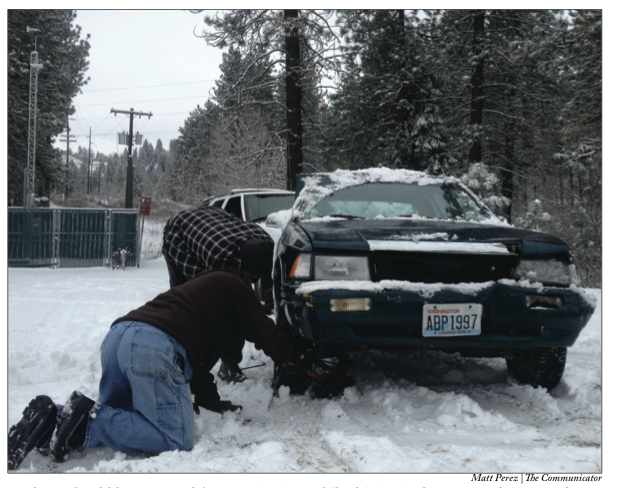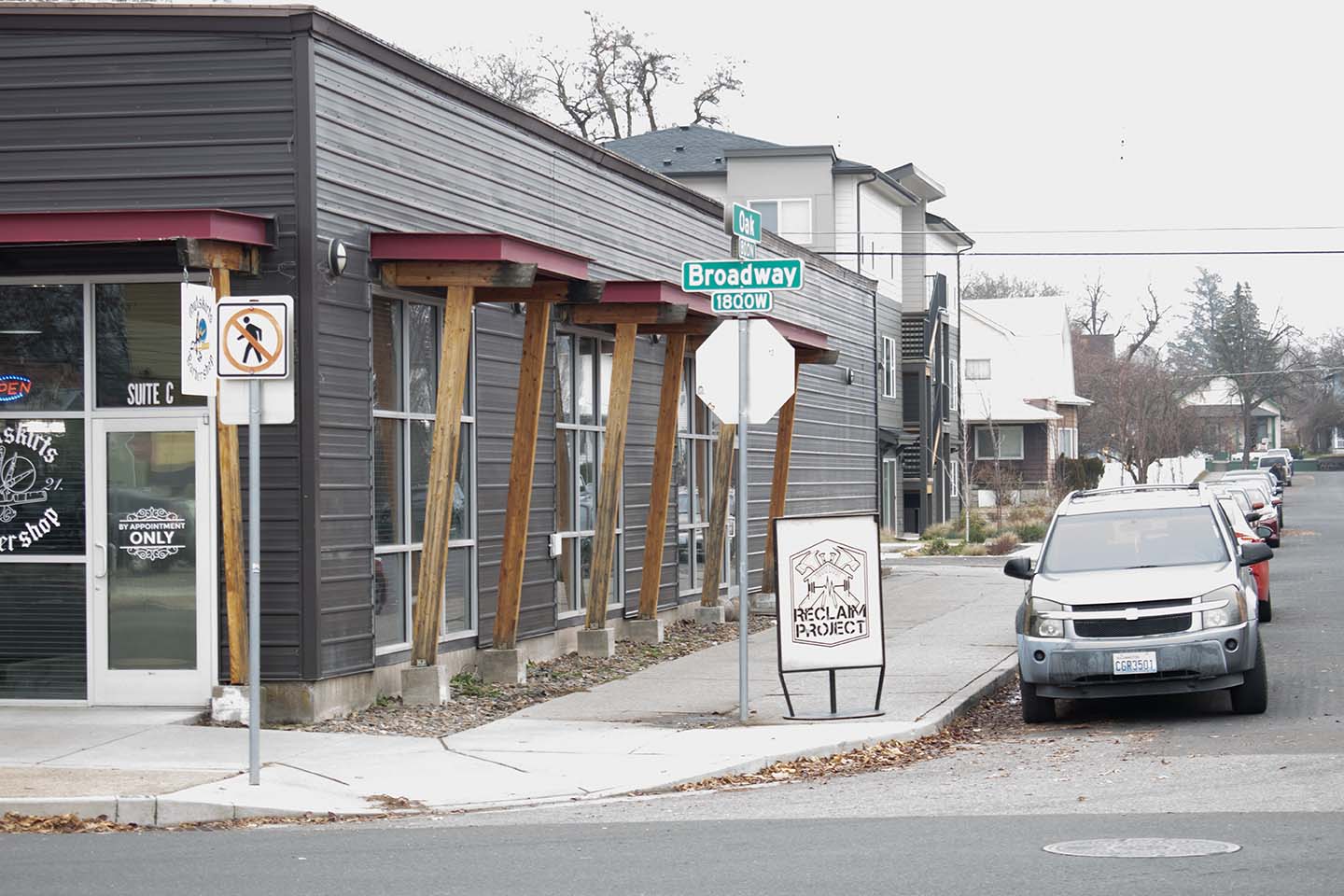Through the winter months, many may pass cars stuck, or broken down beside the road.
Not being prepared for these kind of unfortunate scenarios to come your way can result in both discomfort and frustration. Here are some recommended supplies that every winter driver ought to keep stashed away in their own vehicles in order to prevent themselves from being one of those stranded cars.
Pheobe Dukes, one of the first aid instructors on campus, and an individual with years of experience in emergency/rescue situations advises students in her classes and those she talks to on the do’s and the do-nots.
“All students need to own appropriate tires for the season we’re in.” Dukes said. “All season tires were made for California.”
Her advice is that students have snow tires accessible but that if not available, studded tires work fairly well in most conditions.
“Studded tires are just fine until you find yourself driving on solid ice. That’s when you really need those snow tires.” Dukes said. Dukes explained that although studded tires worked well on most winter road conditions, they don’t work nearly as well as snow tires and/or chains.
“Students should also have their batteries checked. Almost dead batteries tend to freeze this time of year.”
When interviewing students on campus it became clear that a number of them had already taken a number of these precautions.
“I always keep a quick-jump and a tire pump in the trunk of my car.” Guy Antonius, a second year student at SFCC, said.
Next on the list is your handy-dandy emergency shovel for those “get me out of here” moments.
“It’s important to have a short emergency shovel in the back of your vehicle just incase you get high centered or stuck in snow.” Dukes said. Along with that, any amount of traction you can lend your wheels can do a lot towards getting back on the road.
“I’ve found that cat litter is a relatively cheap and an easily packed solution.” Dukes said.
The following are more things that students may already have in their cars, but if they don’t may find around the house, and should be kept close at hand.
Basic tools for various tasks such as, but not limited to, changing out your tires. This can include a jack, tire iron, chains, etc.
“It used to be that you packed flares, but those really don’t burn for long enough. Students would do better to buy a cheaper pair of LED warning lights.”
Students might even pack some munchies, or a sleeping bag. Snacks in the car that won’t freeze serve two purposes, “Chewing on something can help you to think about other things, and will pass the time. Also, its good to keep your calories up” Dukes said, “and a sleeping bag may stay warmer than your car does depending upon the nature of your accident.”
After munchies, the rest is pretty much personal preference, whatever makes you feel safer and what may lend itself to comfort.
“I never go anywhere without my chapstick.” Glory Phelps, a first year student at SFCC, said. “If I have to be stranded somewhere, I don’t want to be stranded with chapped lips.”
Lastly, should you find yourself on the side of the road, and it appears that you may have some time to wait before AAA or your dad/mom comes and saves you,
“Remember to stay calm, call someone for help, and stay in your car.” Dukes said.


